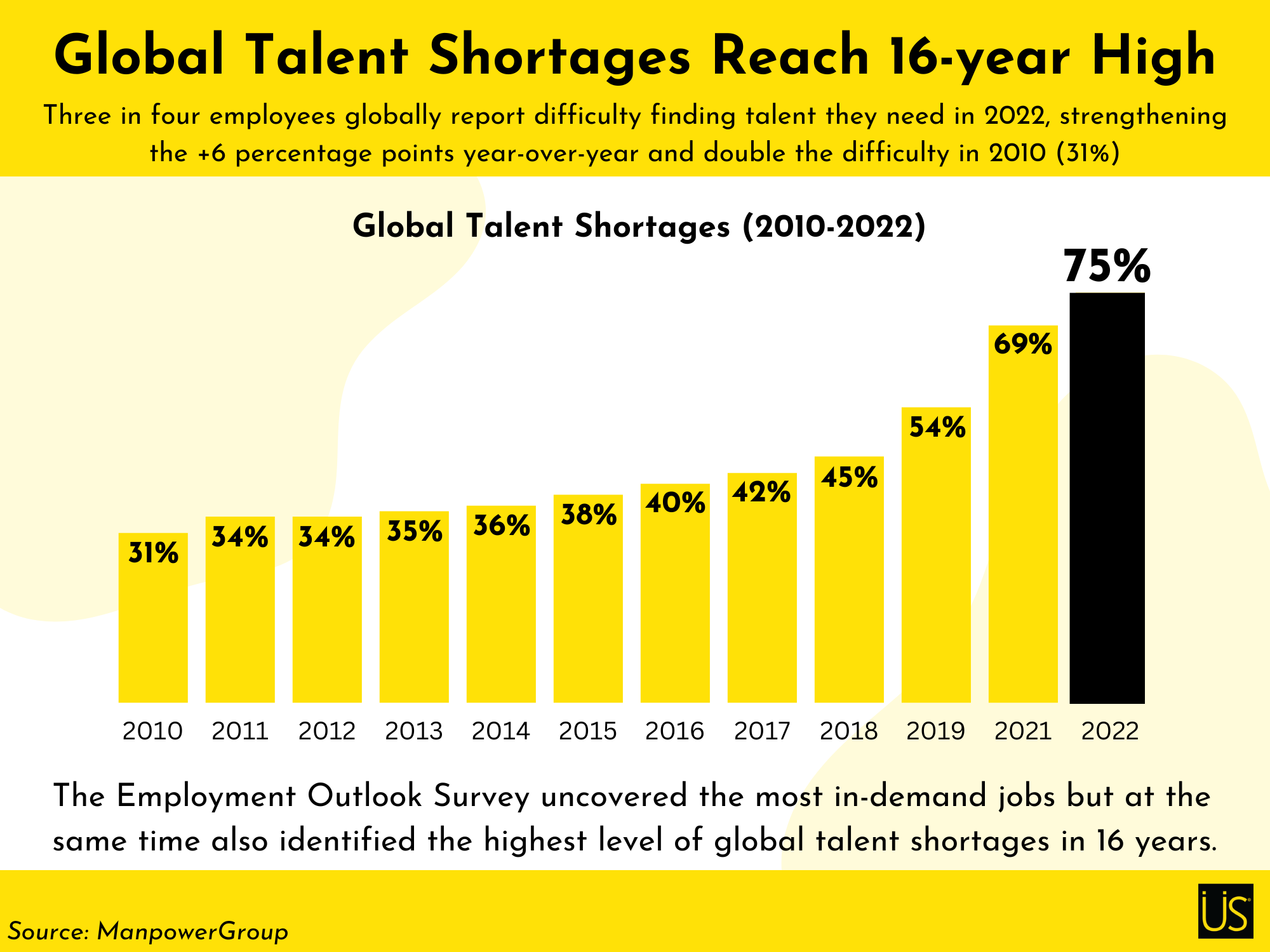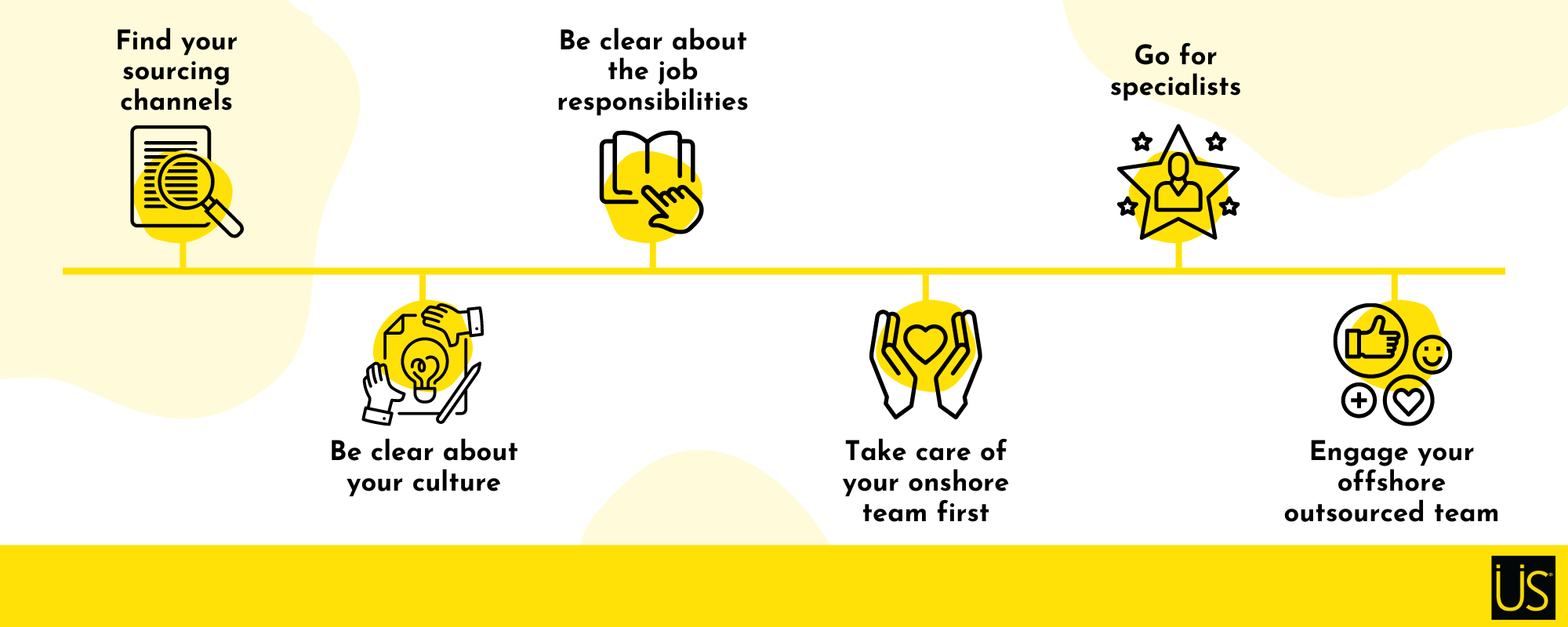
Skills Shortage: Mixing Offshore Talent (Outsourcing) with Onshore Teams
CATEGORIES
Tags
24/7 analytics australia automation Business Process Outsourcing company Copywriting CRM customer support data data and analytics Delegate digital digital advertising digital marketing Digital Support Staff ecommerce Email Management Email Marketing Entrepreneur Freelance Writers google ads graphic design Hiring Freelancers Marketing offshore offshoring ominchannel support organizer outsource Outsourcing Philippines Project management reporting seo seo audit Shopify Small Business social media Social media experts social media management United States video Virtual Assistant Virtual Team
Despite Artificial Intelligence (AI) simplifying or outright taking over some tasks, a skill shortage is looming over us. By 2030, more than 85 million jobs are projected to go vacant without skilled people to take them.
This is from Korn Ferry’s Future of Work: The Global Talent Crunch study. 20 economies examined with country-by-country government stats, analysis, and forecasts from international labor organizations and economists. 85 million projected vacancies in finance, business services, technology, media, telecommunications, and manufacturing.
And $8.5 trillion in unrealized revenues if we don’t upskill and reskill the current workforce.
The highest level of talent shortage since World War II
According to Jan Hatzius of Goldman Sachs, the US alone is in its worst talent shortage in 80 years. Labor demand rebounded post-pandemic but labor supply did not. Workers quit their jobs due to dissatisfaction over wages, hours, and flexible work, and either went back to school, switched industries, or even retired early.
Korn Ferry’s projections also go alongside the most in-demand jobs according to Manpower Group’s survey of 40,000 employers worldwide, with 75% of employers struggling to fill these positions even now, uncovering the highest global talent shortage since 2010.
- IT and data
- Sales and marketing
- Operations and logistics (healthcare, trucking)
- Manufacturing and production
- Customer-facing and front office (hotel and restaurants, retail)
Lack of STEM (Science, Technology, English, Mathematics) education, lack of skilled employees in innovative tech, low birth rates (Japan and most of Europe), population control (China), and the exit of Gen X retiring by 2030 have all contributed to the resulting projection.
Employers now try strategies like a sign-on bonuses to boost hiring, and perks and wage increases for employee retention. However, as Korn Ferry says, the savviest organizations train their hires straight out of school. Hire job seekers and develop their skills.
Today’s projects demand skills
During and after the pandemic, there’s been a positive shift toward skill transfer, skill development, and skills-based hiring.
More and more employers recognize that soft skills learned from one industry are transferable to another. Technical skills can be taught. Employers now also look at new hires– fresh from school or coming from other industries– in a different light: inherent skill sets for collaboration and further learning rather than educational and work history.
Degrees and relevant experience are no longer part of the screening. But so is the location.
When local skills are lacking or low unemployment rates mean job seekers are disproportionate to jobs, companies saw and tapped the opportunities in hiring from a global talent pool.
Because while skill development can bridge the talent gap, it’s an expensive and long endeavor. 97% of employees do want to learn to expand their skills and want the time and resources to do so, according to a survey by Glint. In the meantime, how do companies juggle skill development, company bottom lines, and client needs?
By outsourcing.
A global recruitment strategy: outsourcing
Technology greatly simplifies the way we work, collaborate, and communicate with colleagues and clients. Due in part to this technology, organizations don’t need full-time employees to get the job done. Rather than hours, they need skills and the capacity for critical thinking.
With global hiring, companies access bigger talent pools for the best candidates who already have the technical and soft skill sets needed.
Much like our favorite apps and platforms do, outsourcing simplifies global hiring.
Global recruitment has plenty of competitive advantages like 24/7 efficiency and cost-effectiveness, but also its share of the considerations alongside. For instance, knowing the right language to attract the right talent you want to your job posts. There are subtle but key nuances that can make your job attractive or not to talents in particular countries.
Instead, focus on onboarding your new team.
How to hire a global outsourced team
Find your sourcing channels.
Part of being able to scale as you need is knowing where to look for the skills and talent. Research your options. Job boards if you have the time and energy for screening applicants. Industry networks. Social media communities. Digital agencies.
Agencies like USource have repeat clients who come to us for both short-term tasks and established, long-term, positions.
Be clear about your culture.
What does your company stand for? What are your core values? How does your existing team get the work done? When you’re clear about this, you can better outline your expectations to your new team member/s, and you’re more likely to find a perfect match who also adapts faster.
With agencies like USource, it’s also simple enough to hire another team member if the first one isn’t a good fit. Outsourcing companies should have clear transition plans if your hire is on leave or decides to move on.
Be clear about the job responsibilities.
Company values and your technical requirements are two sides of the same coin that will get you an ideal match. Rather than near-obsolete gatekeeping requirements like degrees and work experiences, technical requirements define exactly everything the job entails.
When you’re clear about what you need to be done, you can set evaluation criteria and trial tasks to both assess and onboard your new outsourced team members.
Take care of your onshore team first.
Head off conflict before it happens. Your current onshore employees will have questions– and fears about a replacement– when you outsource. Internal communication should always provide clarity about changes in the workplace.
Go for specialists.
You might see advice out there about hiring people who can wear multiple hats. To some extent, that’s good advice. But only to some extent. Give your graphic design job to a graphic designer. You can expect SEO knowledge from your writer, but if you need major optimization, we have SEO specialists for that.
Specialization is how the best talents differentiate themselves from the rest.
Because of their training and expertise, specialists get the work done faster. And chances are, they do have the capacity to wear other hats because specialists are the ones who explore a lot in their pursuit of excellence in their niche. They have creativity, curiosity, and flexibility, not to mention the critical thinking it takes for efficient problem-solving.
This goes back to defining job responsibilities. What do you need done? Often, wanting “a multiple hat person” can mean you’re not clear about your priorities.
Engage your offshore, outsourced, team.
Include them in training and ongoing learning/upskilling opportunities in your company.
It’s best to have a hub of communication like Slack where your teams can have their own spaces and a common channel at the same time where they can collaborate, have regular meetings, and connect when the job’s done.
Those regular meetings? For feedback and open communication. Make sure your managers or team leaders give your outsourced team the updates and resources they need to be their best in supporting you and your organization.
Mixing offshore and onshore teams gives your company a significant advantage in lower costs and more talented workers to address skill gaps.
And when you simplify outsourcing with agencies like USource, all you need to do boils down to streamlining your internal communications so everyone’s on the same page, in all their diversity and timezones.



